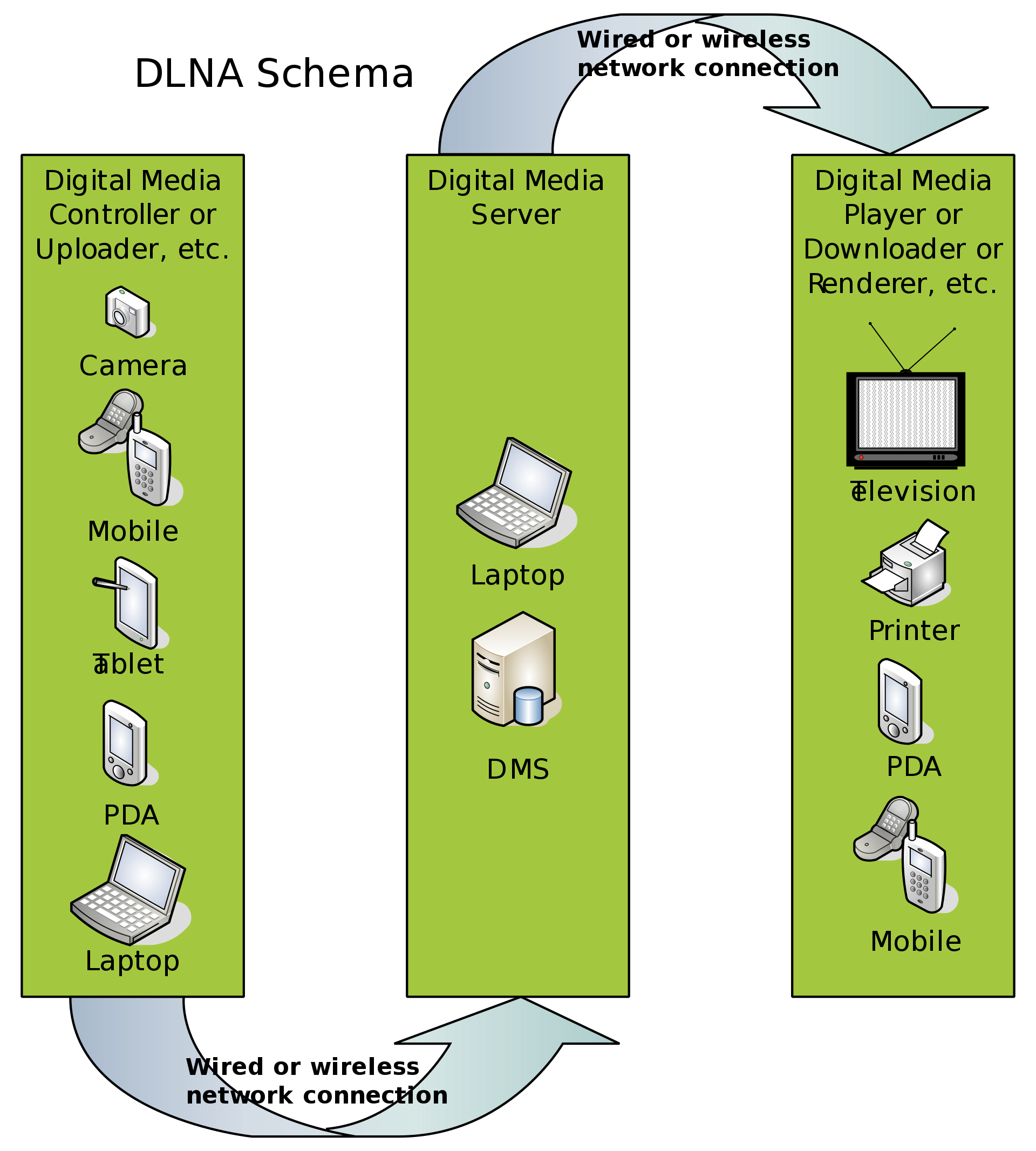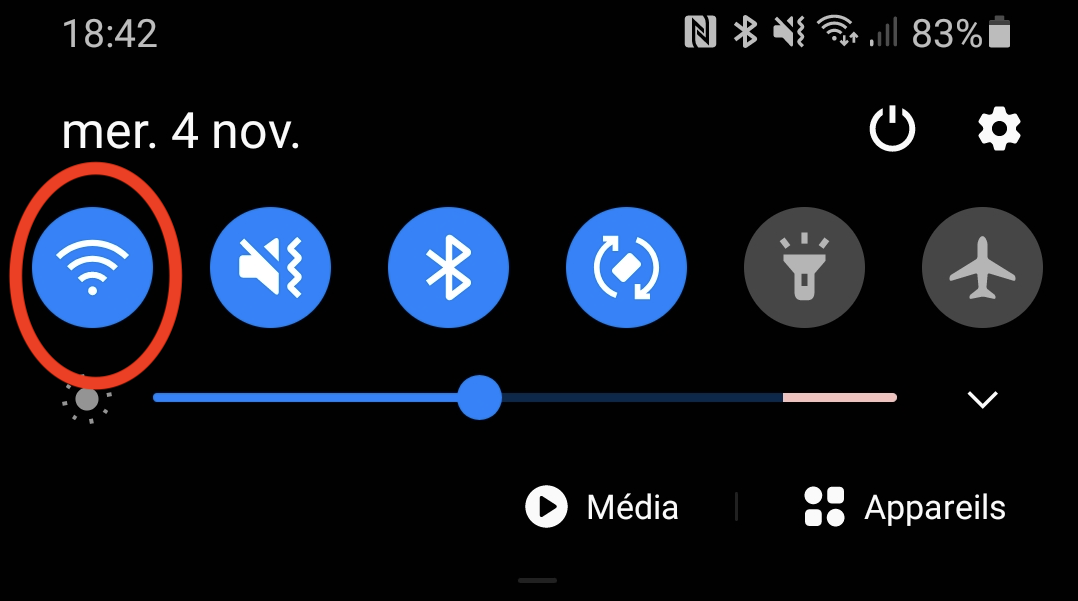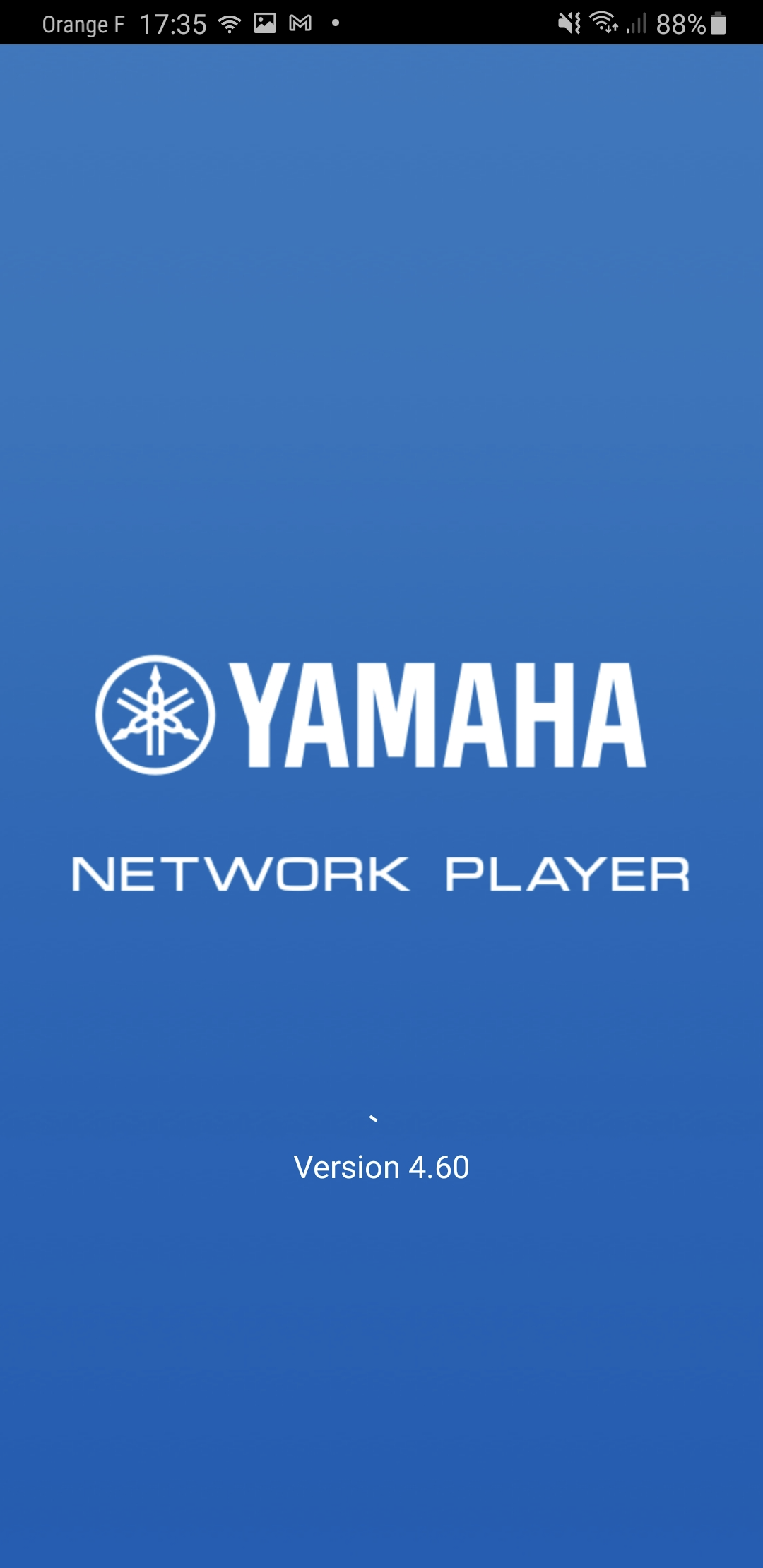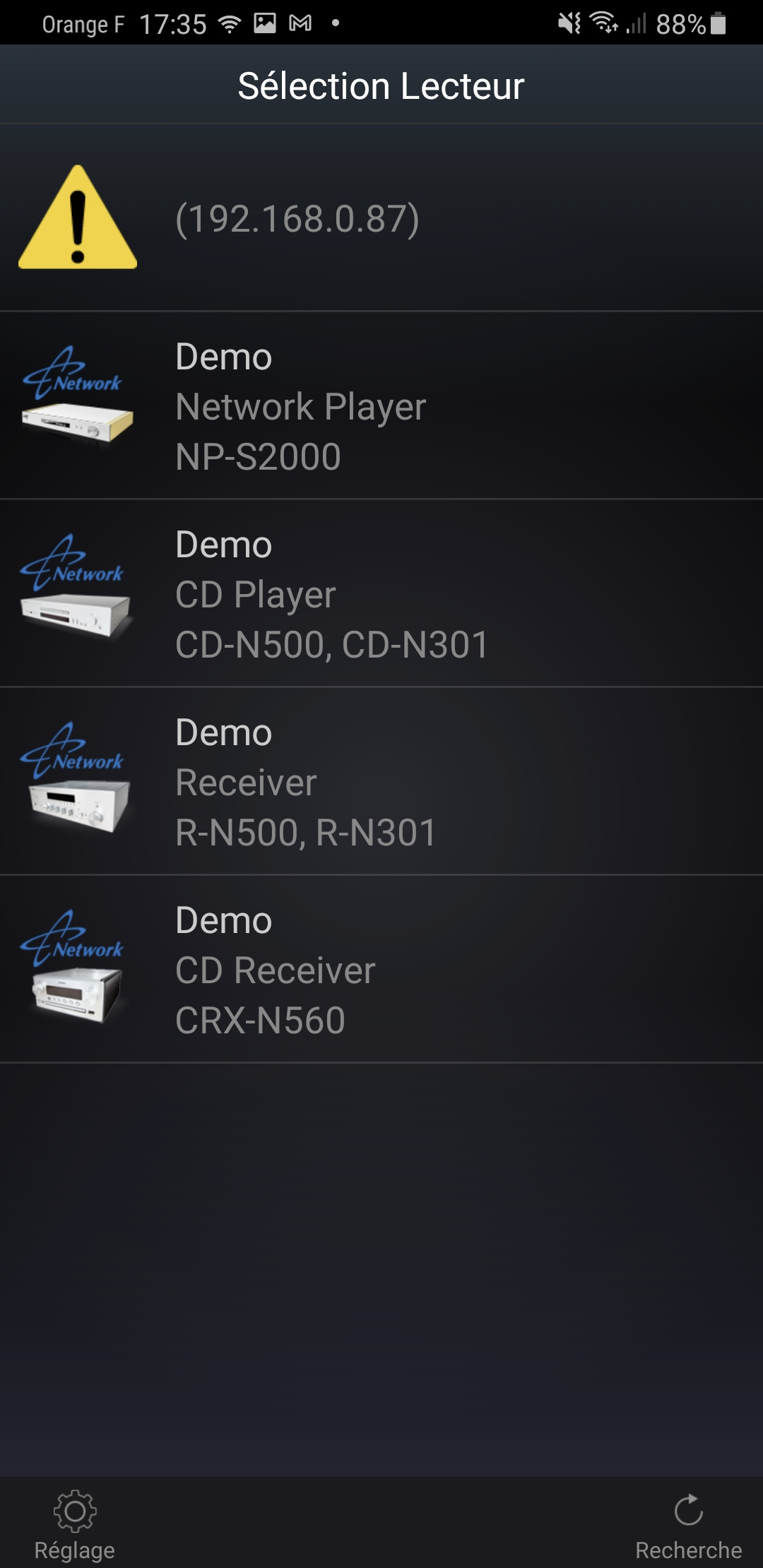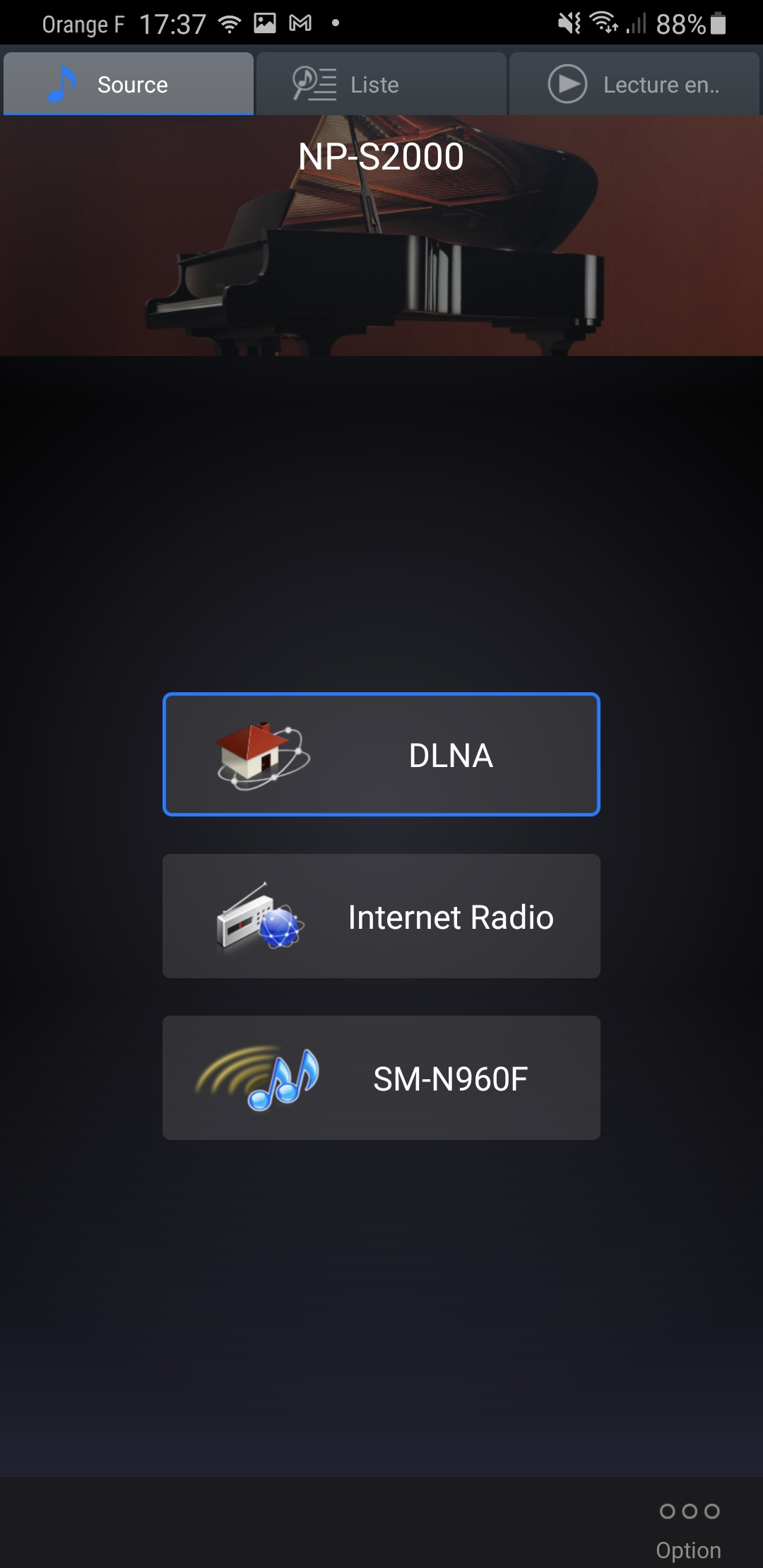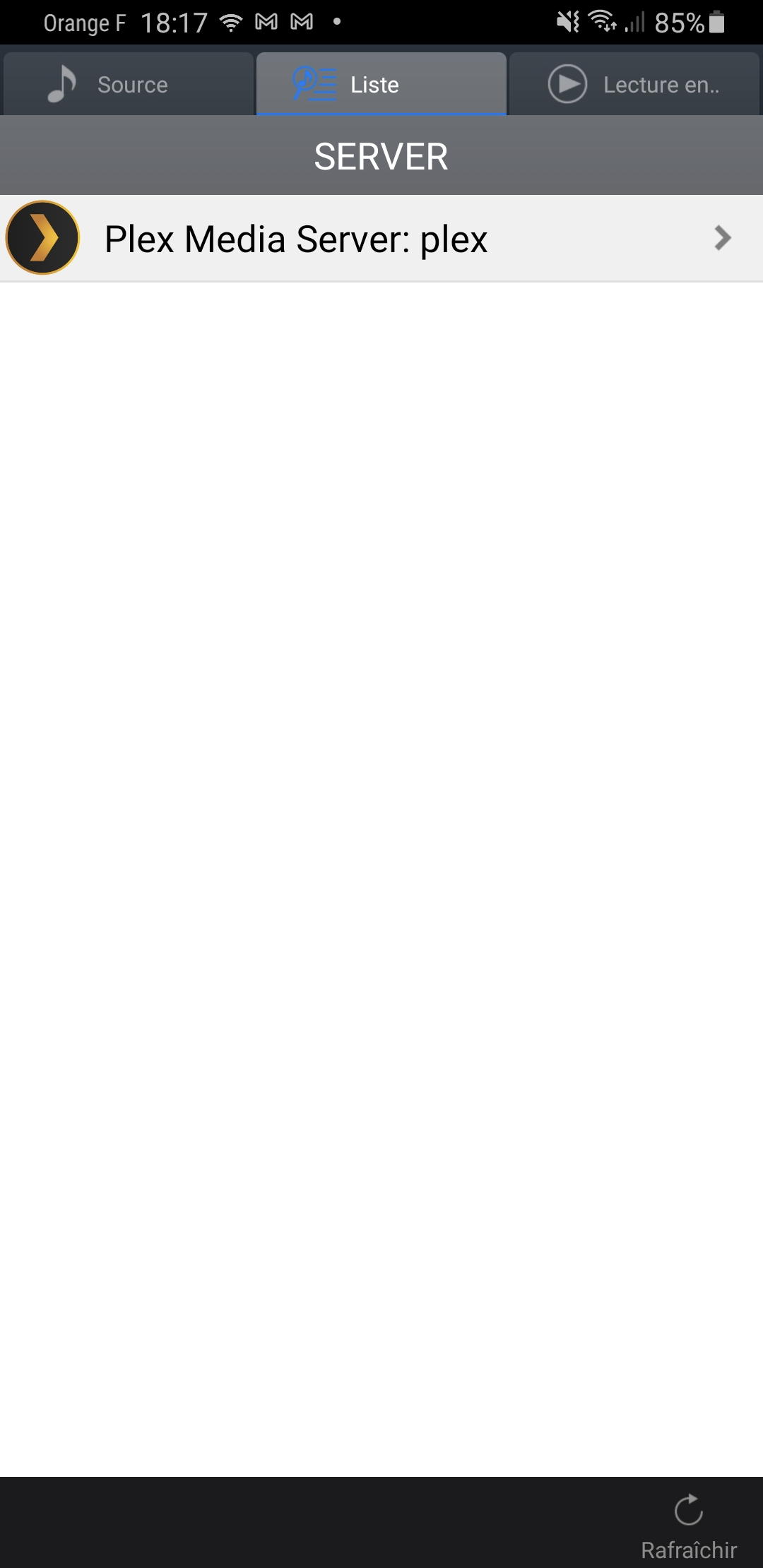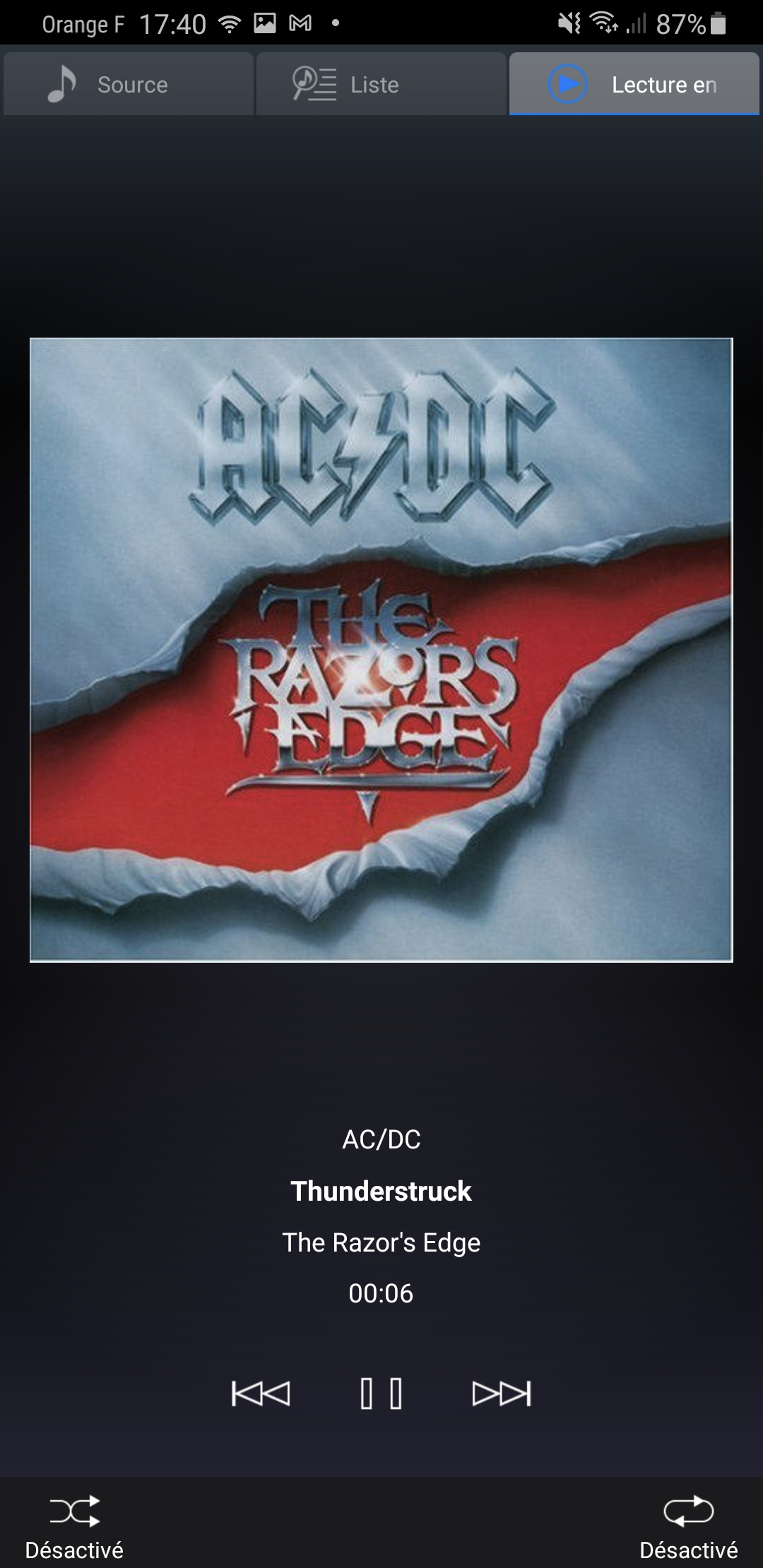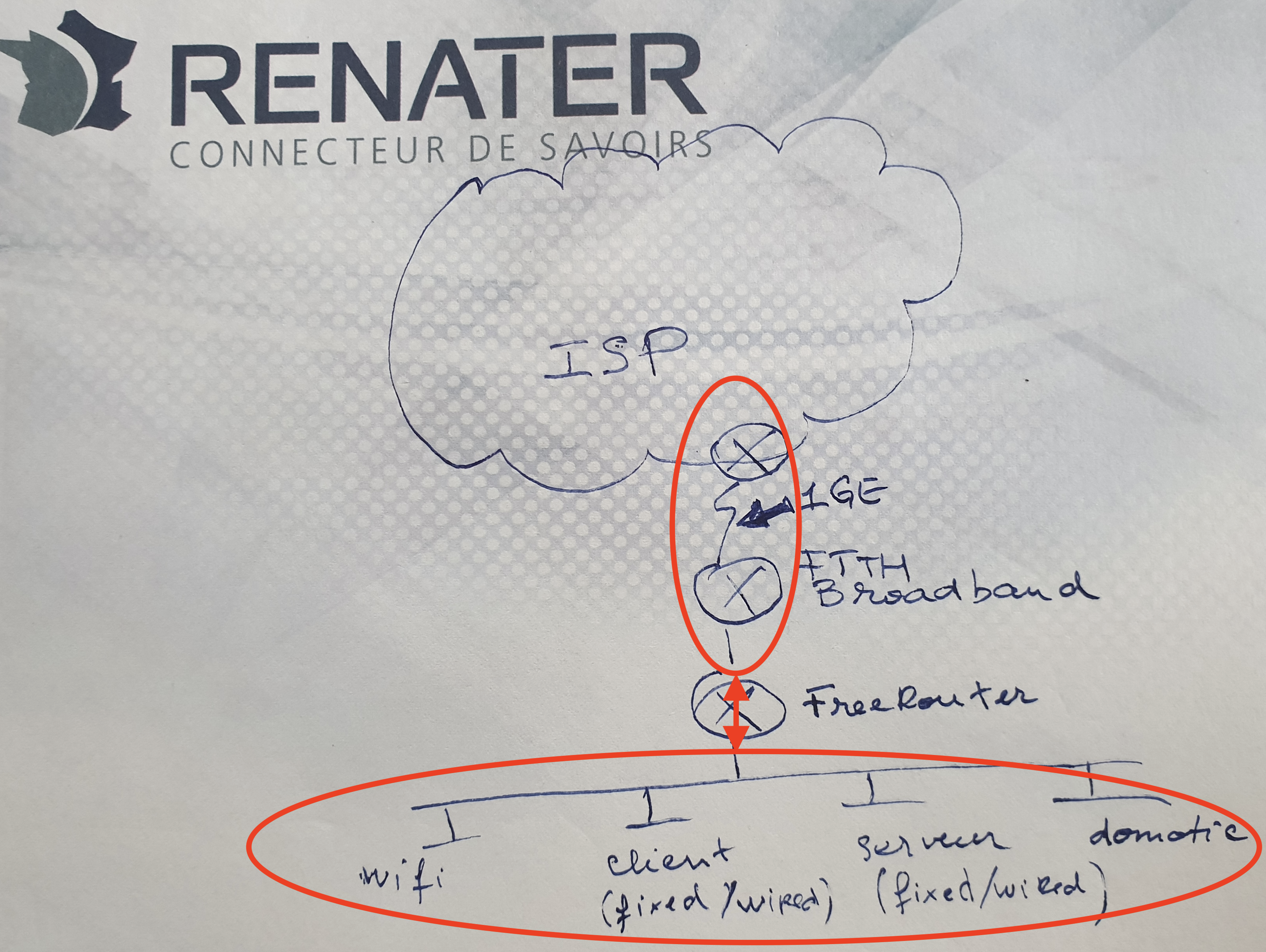Requirement
|
Overview
I'm very fond listening music at home and started my personal music collection. I was aware of this practice, and since then started 24/96 flac collection. As mechanical hard drives became more and more affordable, storage was not an issue for the NAS I deployed. I purchased then a refurbished but still decent DLNA network player (DMP) that would be able to stream music sources from DLNA server(DMS). All of this is orchestrated though my mobile phone acting as DLNA media controller (DMC). So far so good, but DLNA alliance expects that all DLNA protagonists are in the same and unique broadcast domain.
You might have guess already, but I'm not a huge FAN of having a single layer 2 domain at home and throw everything inside the same subnetwork. Granted the fact that not all home network are running OSPF/ ISIS MPLS or Segment Routing, everything is so simple and more predictable to manage at layer 3 whether you use IPv4 or IPv6.
Long story short, I can't listen music by structuring my home network using layer 3 as it is now ...
Article objective
In this article we will pursue the SOHO network appliance installation and enable THE UNIQUE freeRouter feature that you won't find in any router in the world: UPNP forwarder server.
Diagrams
source: DLNA German wikipedia
[ SOHO #008 ] - "It's the end of L2 at my home... At last !"
Verification
Conclusion
In this article we enabled RARE/freeRouter DLNA/UPNP server/client:
- You have now the possibility to position any DLNA devices on any L3 subnet of your home network
- Bye bye flat single VLAN design
- Not having a flat VLAN is desirable when you have lots of IPv4/IPv6 devices of different nature. You would want domotic/IoT devices not in the same subnet as your wifi client and have a separate subnet for you NAS or wired services
RARE validated design: [ SOHO #006 ] - key take-away
In this example the key take-away are:
- Configure an UPNP hub
- Configure UPNP forwarder on very interface you expect DLNA/UPNP communication
- Of course this is IPv4/IPv6 compliant
This is a pretty unique freeRouter feature !
Requirement
|
Overview
In the previous articles we describe the hardware in SOHO #001 and initial staging steps in SOHO #002.
Note
You technically juts have to cut'n paste the config if you get the same hardware and operating system.
But if you pay attention, we did not cover one particular aspect of the hardware: integrated WIFI
Article objective
In this article we will pursue the SOHO network appliance installation and enable the integrated module so that all mobile host @ home can benefit from connectivity offered by SOHO router. In this basic example I'll show you basic WIFI implementation
- WIFI is b/g/n module (therefore no 5Ghz wifi)
- WIFI won't be directly under RARE/freeRouter control
Diagrams
[ SOHO #007 ] - "I'm not wired ... I need connectivity too !"
Verification
Conclusion
In this article we enabled the appliance WIFI integrated hardware:
- We ensured that wifi hardware was detected by Linux kernel
- We also ensured that Linux loaded the right wifi driver kernel module
- hostapd would control wireless interface
- we create a veth pair (veth2a Linux side - veth2b / DPDK side)
- wlan0 traffic is bound to veth2a using pcap2pcap utility (in freeRouter binaries bundle)
- veth2b is bound to sdn998 (and declalred in p4lang server)
- we create a hairpin 1 (hairpin11 , hairpin12) interface
- bridge 1 has also been created
- sdn998 and hairpin11 have been added to the bridge
- hairpin12 is a routed interface declared in VRF inet and has an IP 192.168.129.1 inside wireless subnet 192.168.129.0/24
RARE validated design: [ SOHO #006 ] - key take-away
In this example the key take-away are:
- The above action lead to bridge wireless traffic and pour it into VRF inet
- From that point all defined previously will apply (NAT, DHCP) but now with wireless subnetwork
This example cover the case of a basic bridge in which we included a basic interface sdn998 and a hairpin interfaces pouring traffic from/to VRF inet. freeRouter is acting as a wireless controller local to the integrated WIFI. We will see in further article another typical WIFI implementation more flexible. Pleas note that we could have directly applied routing at sdn998 (so without the use of the bridge and hairpin). The usage of bridge and hairpin setup will be described in a next article describing alternate wifi implementation. In short we will add an OpenWRT Access point behind sdn6 and SOHO router will act as WIFI controller for both the integrated WIFI hotspot and the newly added OpenWRT.
Requirement
|
Overview
In the previous article during the verification we assume to have one host connected to a subnetwork cascaded behind SOHO router@sdn6. However, we did not described how the host could get connectivity.
Article objective
In this article we will pursue the SOHO network appliance installation and enable DHCP for IPv4 server. SOHO router can then answer to DHCPv4 request ingressing sdn6 interface.
- Let's assume we have a switch connected to SOHO router@sdn6 for the future
- sdn6 has ipv4 interface 192.168.136.1 manually configured
- switch has IPv4 192.168.136.2
- subnetwork behind sdn6 is 192.168.136.0/24
- DHCPv4 will serve 192.168.136.3 → 192.168.136.254
Diagrams
[ SOHO #006 ] - "Do you need an IP ?"
Verification
Conclusion
In this article DHCP service has been enabled at:
- SOHO router level
- All host getting an IPv4 via DHCP will get a DNS server set to SOHO@loopback0 (192.168.254.1)
RARE validated design: [ SOHO #005 ] - key take-away
In this example the key take-away are:
- DHCP is available for IPv4 and IPv6
- DHCP here is bound to an interface so rogue DHCP request coming from any router interface other than the speficied interface won't be honoured
- Feel free to explore all DHCP options propose by RARE/freeRouter
DHCP for IPv6 is also available if you want to strictly reproduce IPv4 allocation scheme. In our case we will use IPv6 SLAC.

